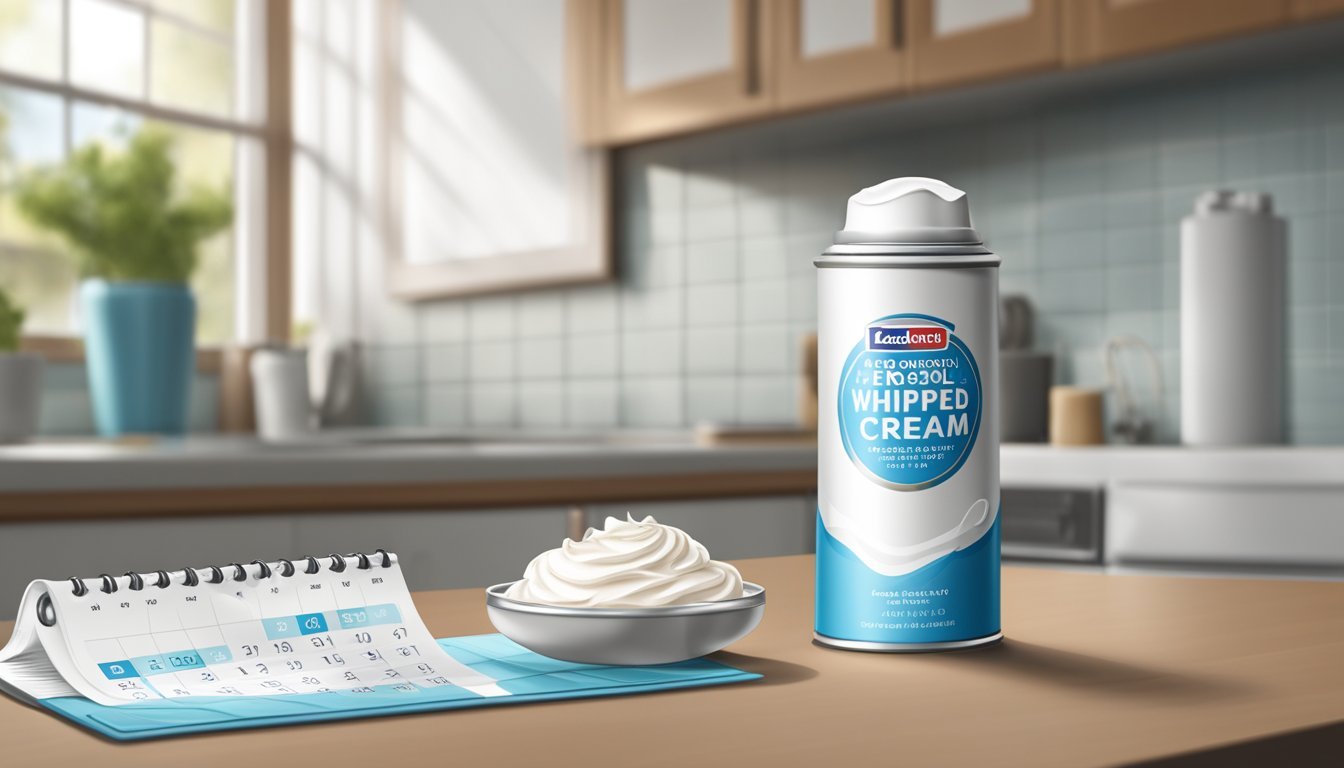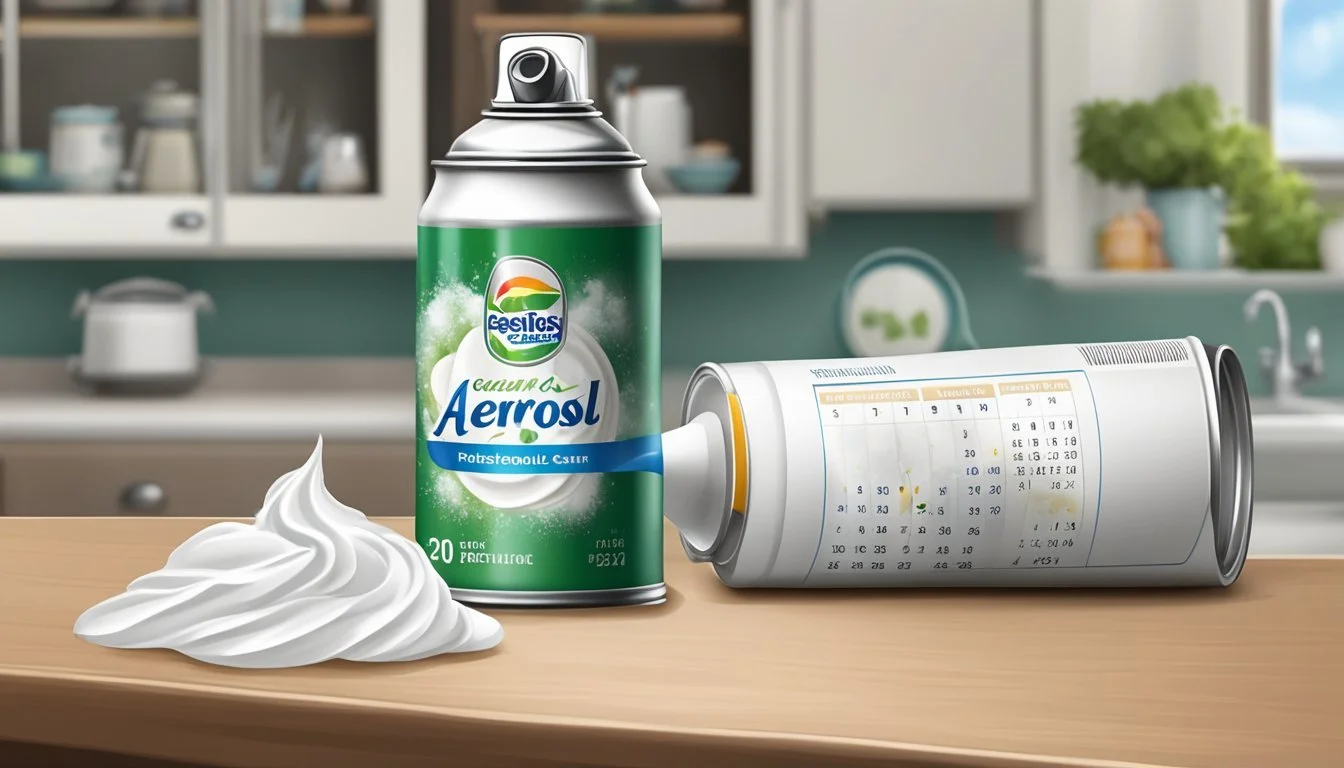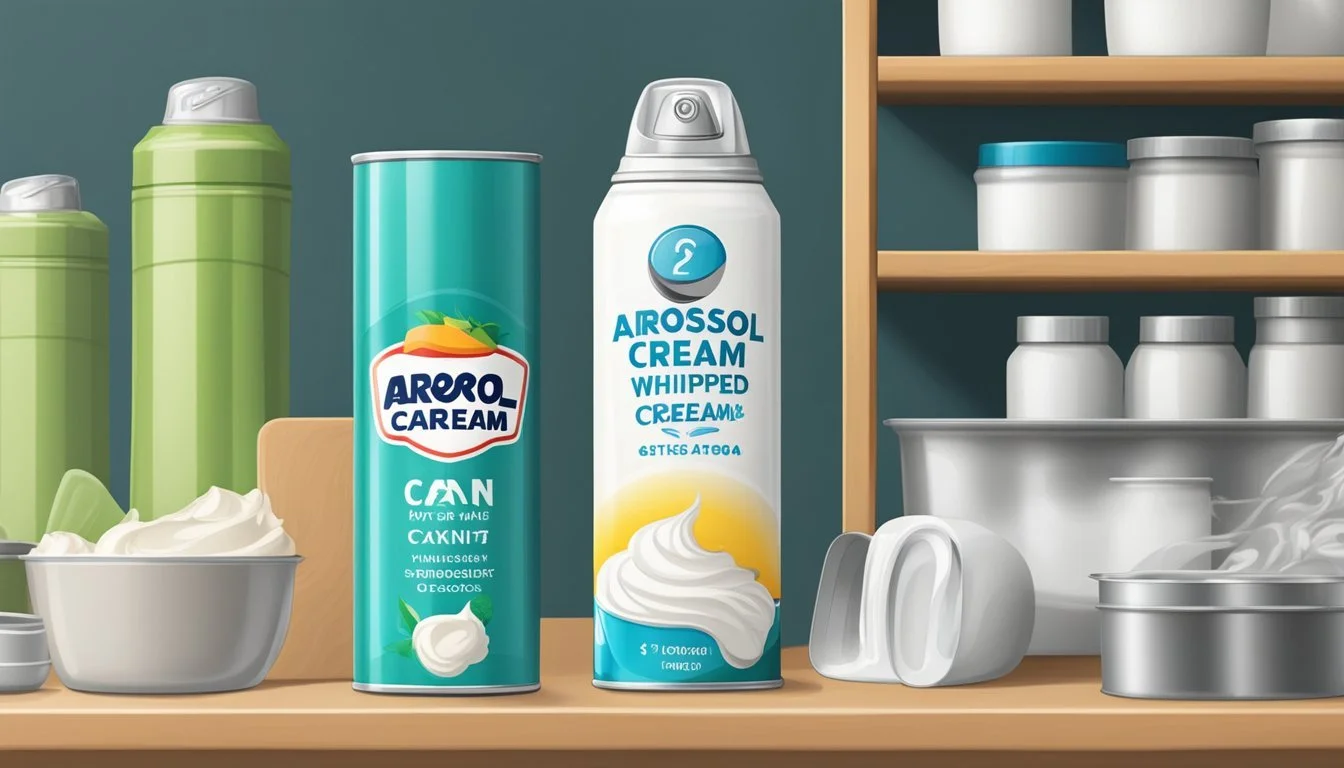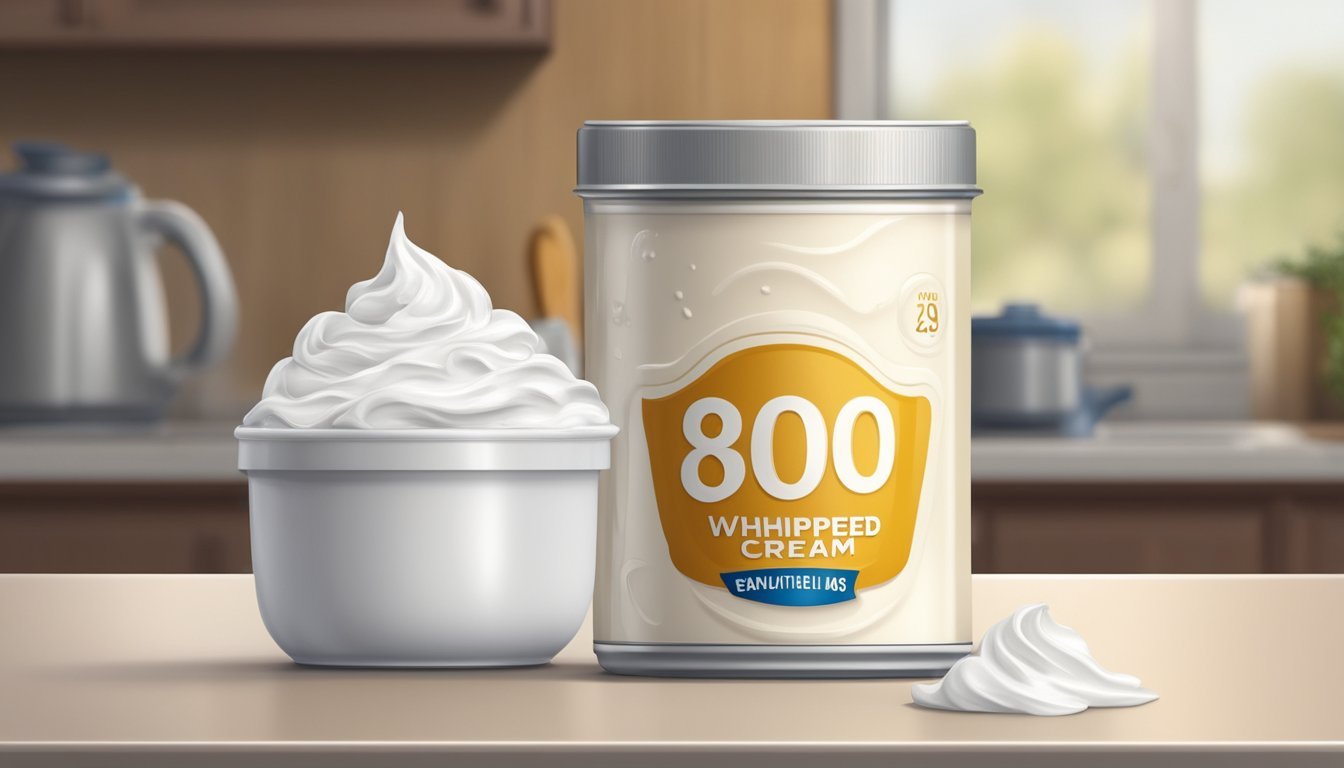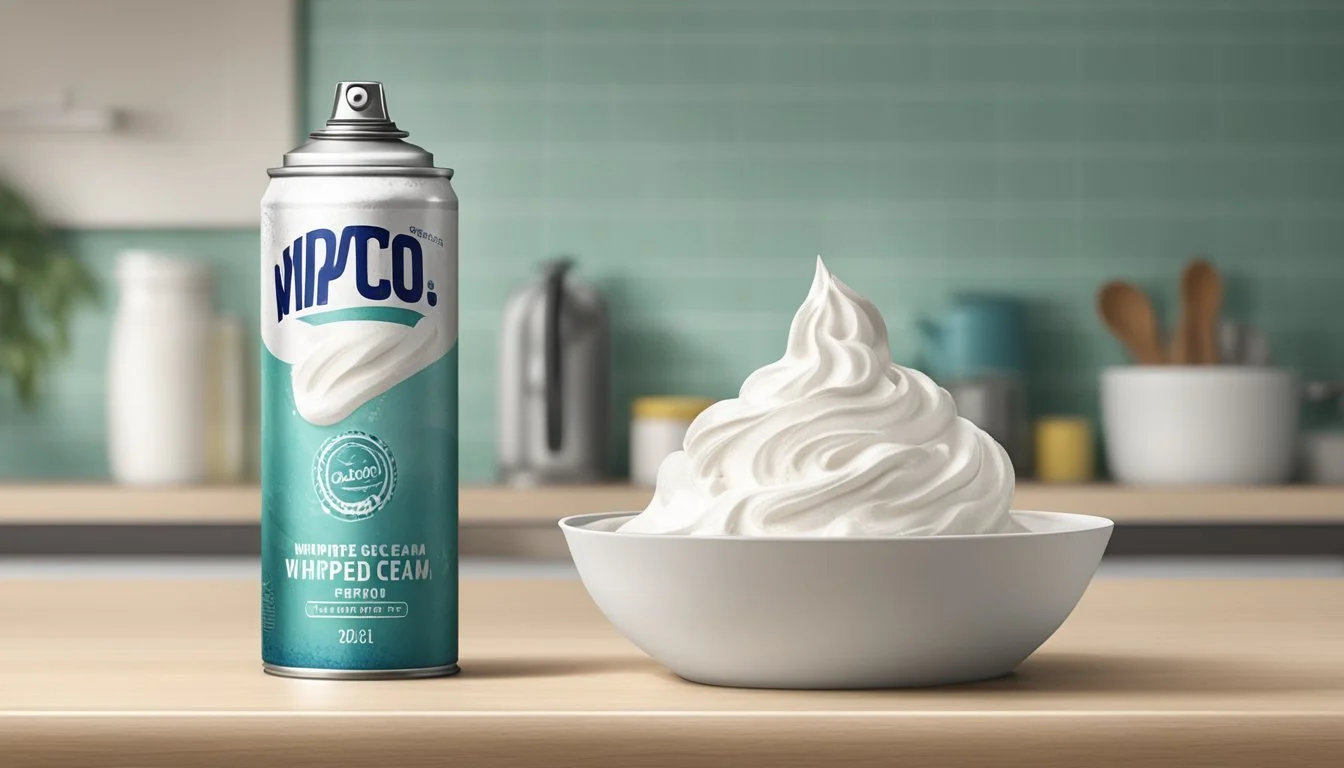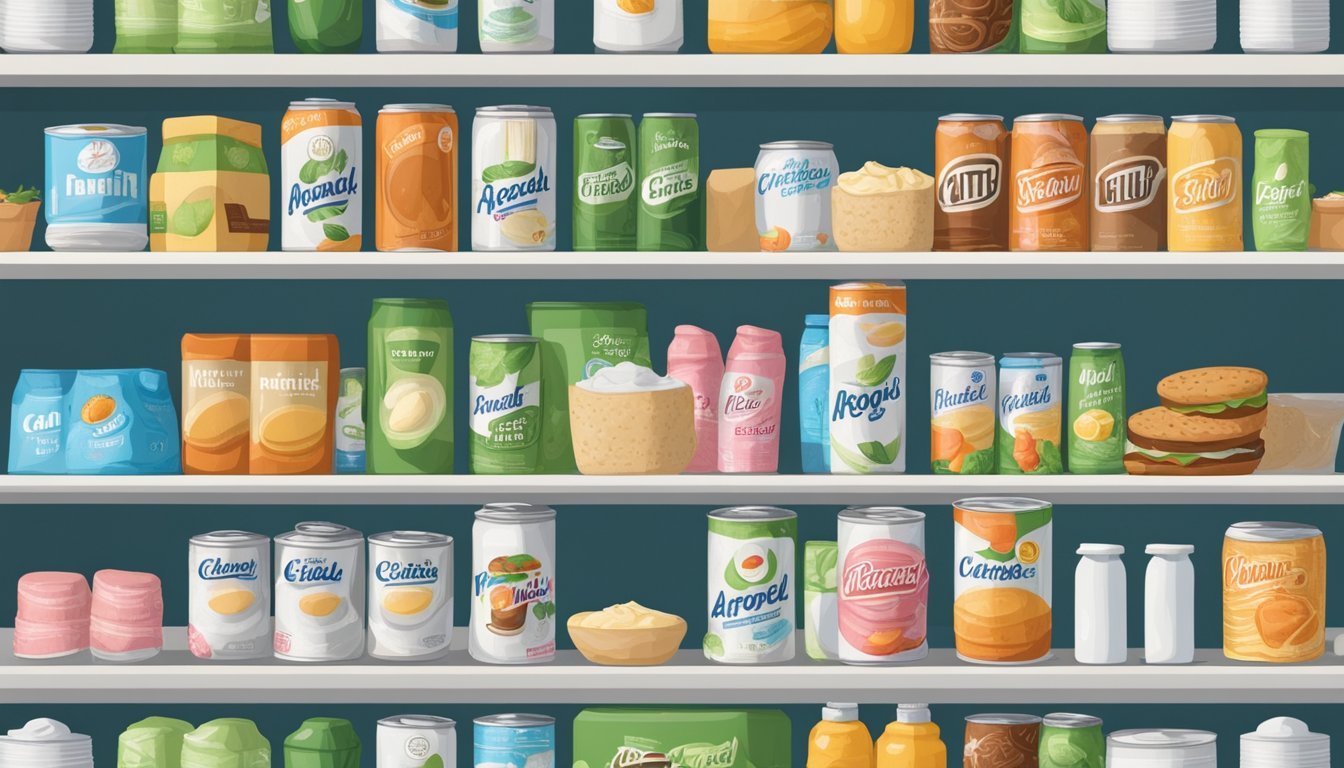How Long Does Aerosol Whipped Cream Last?
Understanding Shelf Life and Storage
Aerosol whipped cream (how long does cream last?) is a popular topping for desserts and beverages, offering a convenient and ready-to-use option for both home cooks and professional chefs. Packaged in pressurized canisters, it is a dairy product that has been sweetened and whipped, making it light and fluffy. The convenience of aerosol whipped cream comes from its ease of use, requiring only a simple press to dispense the cream, which is already mixed with gas to maintain its structure.
The shelf life of aerosol whipped cream is a point of interest for consumers aiming to reduce waste and ensure the safety of their food. When stored in a refrigerator, an unopened can of aerosol whipped cream can last until the date indicated on the packaging. Once opened, the product generally remains good for up to two to three weeks—if it is kept refrigerated and properly sealed, ensuring that it does not spoil or lose texture. It is essential to rely on both the use-by date and sensory evaluation—checking for off odors, flavors, or any signs of spoilage before use—to determine the whipped cream's freshness.
For those who wish to extend its usability beyond the typical refrigerated shelf life, aerosol whipped cream can also be frozen. This method can effectively prolong the life of whipped cream, allowing it to last for several additional months. However, upon thawing, the cream's consistency might be affected, so this practice is more suitable when the whipped cream will be used as an ingredient rather than as a decorative topping.
Understanding Whipped Cream
Whipped cream is a popular dairy product enjoyed for its light, airy texture and creamy taste. It is commonly used as a topping for desserts and beverages. The section below outlines the different types of whipped cream available and the role constituents and stabilizers play in its production and longevity.
Types of Whipped Cream
Homemade Whipped Cream: Made by whipping heavy cream with sugar until it becomes light and voluminous. It typically contains no stabilizers unless specified in a recipe.
Aerosol Whipped Cream: This convenience product is available in a can and uses a propellant to dispense the whipped cream. It often contains additional stabilizers to maintain its structure.
Cool Whip: A non-dairy whipped topping that comes in a tub. Cool Whip is not whipped cream but a concoction that includes stabilizers and sweeteners to mimic whipped cream texture.
Stabilized Whipped Cream: Whipped cream that has stabilizers like gelatin or cornstarch added to it to prolong its structure and is less likely to deflate.
Constituents and Stabilizers
Constituents: The primary constituent of homemade whipped cream is heavy cream, often combined with powdered sugar for sweetness.
Stabilizers:
Gelatin: Provides a firm structure and is commonly used in stabilized whipped cream recipes.
Cornstarch: Frequently added to prevent the whipped cream from weeping, cornstarch can help extend the shelf life.
Non-fat Powdered Milk: Sometimes used in recipes as a stabilizer to improve texture and body of the whipped cream.
Uses of stabilizers vary depending on the type of whipped cream. For homemade and aerosol varieties, additional ingredients like stabilizers help prolong shelf life and maintain consistency throughout their use.
Storage Essentials
Proper storage of aerosol whipped cream is crucial to maintain its quality and extend its shelf life. Factors such as temperature, container type, and method of storage play significant roles in preserving the consistency and flavor of whipped cream.
Correct Refrigeration
Upon purchasing aerosol whipped cream, it should immediately be stored in the refrigerator. The ideal temperature for keeping the whipped cream fresh is at or below 40°F (4°C). It is essential to keep the can upright to ensure the propellant functions correctly. Aerosol whipped cream typically lasts up to three months when refrigerated, provided that it has not passed its 'use by' date. After opening, it should be used within two weeks to enjoy its optimal quality and consistency.
Refrigerated Storage Time:
Unopened: Up to 3 months or 'use by' date
Opened: Within 2 weeks for best quality
Freezing and Defrosting
While not all manufacturers recommend it, aerosol whipped cream can be frozen to extend its shelf life beyond refrigeration limits. When freezing, it's preferable to dispense the whipped cream onto a tray or into an airtight container to prevent freezer burn and flavor contamination. Frozen whipped cream can last for 3-4 months. When ready to use, defrosting should be done slowly in the refrigerator to maintain the cream’s structure. However, the consistency might change, and frozen whipped cream is best used in recipes where it is mixed with other ingredients rather than as a topping.
Freezing:
Dispense and store in an airtight container or on a tray.
Use within 3-4 months for best results.
Defrosting:
Thaw in the refrigerator, not at room temperature.
Mix thawed whipped cream into recipes for best results.
Shelf Life Determinants
The shelf life of aerosol whipped cream hinges on accurately identifying the product's expiration date and understanding the factors that impact its quality over time.
Identifying Expiration
To optimize the use of aerosol whipped cream and minimize waste, one needs to pay attention to various dates printed on the packaging:
Expiration Date: This is the last day that the manufacturer guarantees the product's peak quality.
Best-By Date: Often found on whipped cream, this date suggests when the product should be consumed for best flavor and quality.
Sell-By Date: This date indicates to retailers when the product should be sold or removed from the shelf.
All these dates serve as a guideline for consumers, but it is important to note that aerosol whipped cream can often maintain its quality for 2 to 3 weeks past these dates if stored properly.
Impacts on Quality
Several factors can hasten the quality loss in aerosol whipped cream after opening:
Temperature: Consistent refrigeration is essential. Fluctuations can lead to texture loss and color changes.
Seal Integrity: The can's seal must remain intact. Once compromised, product quality can decline rapidly.
Quality Factor Consequence of Neglect Temperature Causes changes in texture and color. Seal May lead to spoilage ahead of schedule
For the best experience, one should adhere to the date labels while also assessing the product's texture and color before use.
Signs of Spoilage
When assessing the quality of aerosol whipped cream, the presence of spoilage is typically indicated by several sensory changes. It is important for consumers to recognize these signs promptly to avoid the consumption of spoiled products.
Color and Texture Changes
The color of fresh aerosol whipped cream is typically white or slightly off-white. Any discolorations such as yellowing or the presence of mold indicate spoilage. Additionally, the texture should be light, fluffy, and consistent. If the cream appears watery or clumpy, or if there is separation of the ingredients, this is a clear sign that the whipped cream has turned sour and should not be consumed.
Odor and Taste
A fresh can of aerosol whipped cream should have a mild and sweet aroma. Any off-putting odors or a sour smell are indicative of spoilage. In terms of taste, any deviations from the cream's naturally sweet and mild flavor, such as a sour or rancid taste, confirm that the whipped cream should be discarded. It is not advised to taste the product if spoilage is suspected based on visual or olfactory assessment.
Using Expired Whipped Cream
Expired whipped cream can pose safety risks due to potential spoilage. One must be vigilant in identifying signs of spoilage, while also considering ways to minimize waste where safely possible.
Safety Considerations
Spoilage Signs: Consumers should be alert for changes in odor, texture, and taste. An off smell, discoloration, mold presence, or a sour flavor indicates that the whipped cream is unsafe for consumption.
Health Risks: Using expired whipped cream can lead to foodborne illnesses. Safety should always take precedence. If there is any doubt about the whipped cream's freshness, it should be discarded to prevent health risks.
Waste Reduction Tips
Regular Checks: Periodically checking expiration dates and the condition of whipped cream can prevent unnoticed spoilage.
Proper Storage: Storing aerosol whipped cream in the back of the refrigerator can help maintain its quality for a longer period, reducing the chances of waste.
Freezing Option: If the whipped cream is nearing its expiration but shows no signs of spoilage, freezing it can extend its life for several months. However, ensure that you transfer it to an airtight container and clearly label it with the freeze date.
Tips for Extending Shelf Life
Preserving the freshness of whipped cream can be easily managed with proper storage techniques and the use of stabilizing ingredients for homemade versions.
Homemade Whipped Cream
For those preparing whipped cream from scratch, incorporating stabilizers can significantly increase its longevity. One effective method includes:
Gelatin: Add 1/2 teaspoon of gelatin, pre-dissolved in 1 tablespoon of cold water and melted, to each cup of whipping cream during the soft-peak stage. This can help maintain structure and extend shelf life.
Proper storage is also crucial:
Refrigeration: Always store homemade whipped cream in an airtight container in the refrigerator.
Temperature: Keep it at a consistent cool temperature, ideally below 40°F (4°C) to slow down spoilage.
Store-Bought Aerosol Whipped Cream
When dealing with store-bought aerosol whipped cream, the following practices should be adhered to:
Immediate Refrigeration: Store the can in the refrigerator immediately after use.
Avoid Heat: Keep aerosol whipped cream away from sources of heat or direct sunlight.
Seal Tightly: Ensure the lid is tightly closed after each use to prevent air and other contaminants from entering the can.
Use-by Date: Adhere to the use-by date as a guideline for maximum freshness, although storage practices may allow for an extended shelf life of 2-3 weeks post-opening.
Consistent application of these storage practices helps in maintaining the quality and extending the shelf life of both homemade and store-bought aerosol whipped cream.
Practical Applications
Aerosol whipped cream, commonly referred to as squirty cream, lends itself to a variety of culinary uses. Its convenience and creamy texture make it a favorite for enhancing both the flavor and presentation of desserts and beverages. Users appreciate the consistent volume it provides, while its longevity—lasting up to three months in the refrigerator after opening—ensures it’s ready whenever needed.
Desserts and Baking
For desserts, aerosol whipped cream is an effortless way to decorate cakes and desserts. Its ability to maintain form for hours allows chefs and home bakers to create eye-catching toppings that stand the test of time during meals or events. It's not suitable for baking mixtures that require the whipped cream to maintain structure when heated, but it excels as an attractive, fresh finishing touch.
Cakes: A quick, decorative swirl atop slices enhances visual appeal and taste.
Fruit salads: A dollop adds a lush complement to the natural sweetness of the fruit.
Beverages and Other Uses
When it comes to beverages, the addition of squirty cream to coffee serves both a practical and aesthetic function, injecting a dash of creaminess while also creating a tempting presentation. While it doesn't integrate into hot drinks as thoroughly as fresh whipped cream might, it floats perfectly on top, slowly melting to alter the drink's texture.
Coffee: Elevates the standard cup with a rich, smooth top layer.
Fruit salads: Offers a swift, convenient creaminess that contrasts with the crispness of fresh fruits.
Troubleshooting Common Issues
When dealing with aerosol whipped cream such as Reddi Whip, consumers might face issues such as separation and a loss of volume. These common problems can often be addressed with a few simple steps to ensure the cream maintains its desired consistency and performance.
Preventing and Fixing Separation
Separation occurs when the liquid and gas components within the aerosol whipped cream can no longer hold together, resulting in a watery substance being expelled instead of a fluffy cream. To prevent and fix this:
Storage: Always store cans upright in the fridge to keep the contents properly mixed.
Warmth: Briefly run warm hands around the can if separation occurs. The warmth can help recombine the contents.
Shaking: Prior to use, shake the can vigorously for 5-10 seconds to help the ingredients blend.
Maintaining Volume and Consistency
Loss of volume or having whipped cream that quickly deflates can be indicative of an issue with the cream being unstabilized. To maintain the cream's volume and consistency:
Stabilizers: Use whipped cream containing stabilizers or add a whipped cream stabilizer to homemade versions.
Temperature: Serve immediately after dispensing or store any unused portion in the refrigerator to help maintain its structure.
Usage: Dispense the whipped cream with the can completely inverted to ensure proper release of the product and prevent gas from escaping prematurely.
By following these targeted tips, one can help extend the life and quality of aerosol whipped cream, ensuring it adds the perfect touch to desserts and beverages.

